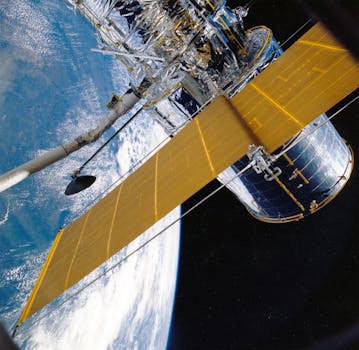
Beyond Earth: How Recent Advances Are Shaping Satellite Telecommunications
Focus Keyword: Satellite Telecommunications
Satellite telecommunications have come a long way since the launch of the first commercial communications satellite, Intelsat 1, in 1965. Recent advances in space technology have enabled the development of more efficient, cost-effective, and high-throughput satellite systems, transforming the way we communicate beyond Earth’s surface.
The increasing demand for global connectivity, driven by the growing need for remote communication, navigation, and data transfer, has driven innovation in the satellite telecommunications industry. One of the significant advancements in recent years is the development of high-throughput satellites (HTS), which offer higher data rates and greater spectral efficiency than traditional satellites.
HTS systems use advanced technologies such as spot beam antennas, frequency reuse, and adaptive modulation to achieve higher data rates and increased capacity. This has enabled the provision of high-speed broadband services, including internet access, video streaming, and voice over internet protocol (VoIP) services, to remote and underserved areas around the world.
Advances in Space Technology
Recent advances in space technology have played a crucial role in shaping the future of satellite telecommunications. The development of new launch vehicles, such as reusable rockets, has reduced the cost of accessing space, making it more affordable to launch satellites into orbit. Additionally, advancements in materials and manufacturing technologies have enabled the production of lighter, more efficient, and more powerful satellites.
The use of advanced propulsion systems, such as electric propulsion and hall effect thrusters, has also improved the efficiency and maneuverability of satellites. This has enabled satellites to maintain their position and altitude more accurately, reducing the risk of collisions and improving overall system performance.
Impact on Global Connectivity
The recent advances in satellite telecommunications have had a significant impact on global connectivity. Satellite-based communication systems have enabled the provision of vital services, including emergency response, navigation, and remote communication, to areas where traditional communication infrastructure is limited or non-existent.
Satellite telecommunications have also played a critical role in supporting global economic development, enabling businesses and organizations to communicate and transfer data securely and efficiently. The increasing use of satellite-based communication systems has also driven innovation in areas such as telemedicine, e-learning, and remote monitoring, improving the quality of life for people around the world.
Future of Satellite Telecommunications
The future of satellite telecommunications looks promising, with ongoing research and development focused on improving the efficiency, capacity, and affordability of satellite systems. The development of new satellite constellations, such as low-earth orbit (LEO) and medium-earth orbit (MEO) systems, is expected to further increase global connectivity and reduce latency.
The use of advanced technologies, such as artificial intelligence and machine learning, is also expected to play a significant role in shaping the future of satellite telecommunications. These technologies will enable the optimization of satellite system performance, improving the efficiency and capacity of satellite networks and enabling the provision of more sophisticated services and applications.



